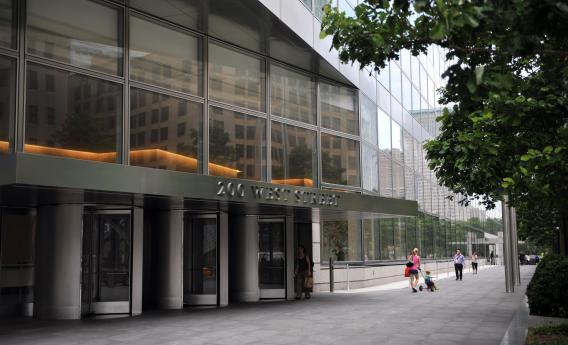Goldman Sachs talks a good game about balancing short-term earnings with longer-term opportunities. In the current moribund environment, the moves by Chief Executive Lloyd Blankfein and his lieutenants to tweak the Wall Street firm’s capital structure and trim its costs look savvy. But they’re still treating pay as sacrosanct.
Overall compensation as a percentage of the Wall Street firm’s revenue came in at 44 percent in the second quarter, as in the first three months of the year. That’s way above the 35 percent at JPMorgan’s investment banking unit. The comparison isn’t quite apples to apples, but such a high rate looks unsustainable when Goldman only managed a measly 5.4 percent annualized return on equity in the second quarter.
The ROE would have been even lower had Blankfein not already started cutting $1.4 billion from annual non-compensation expenses. Goldman also bought back 14.3 million shares last quarter - more than analysts were expecting. But banks don’t get to decide freely on that: the Federal Reserve makes the call based on a company’s capital and liquidity.
Goldman executives recognize the problem of having returns below the cost of capital, which is probably around 10 percent to 11 percent. “We are not going to have an acceptable return on equity in this environment,” finance chief David Viniar lamented. He also announced an extra $500 million of annual non-comp expense cuts by the end of the year.
Such initiatives make it all the odder that pay - the bank’s biggest expense - has remained untouched. Granted, Goldman usually adjusts accumulated pay in the fourth quarter, for example taking last year’s total comp down slightly to 42.4 percent of revenue.
Assuming 2012 earnings come in at double the first-half showing, Goldman’s ROE would only top 10 percent if the comp ratio fell to 38 percent of revenue. Executives are concerned that too drastic a cut could push staff to leave for rivals. But shareholders get only what’s left over after bankers get their bonuses. They’ll expect a bigger slice than they’re currently getting. Only when Goldman can restore its traditional premium profitability will its owners accept the need for premium pay.
Read more at Reuters Breakingviews.
